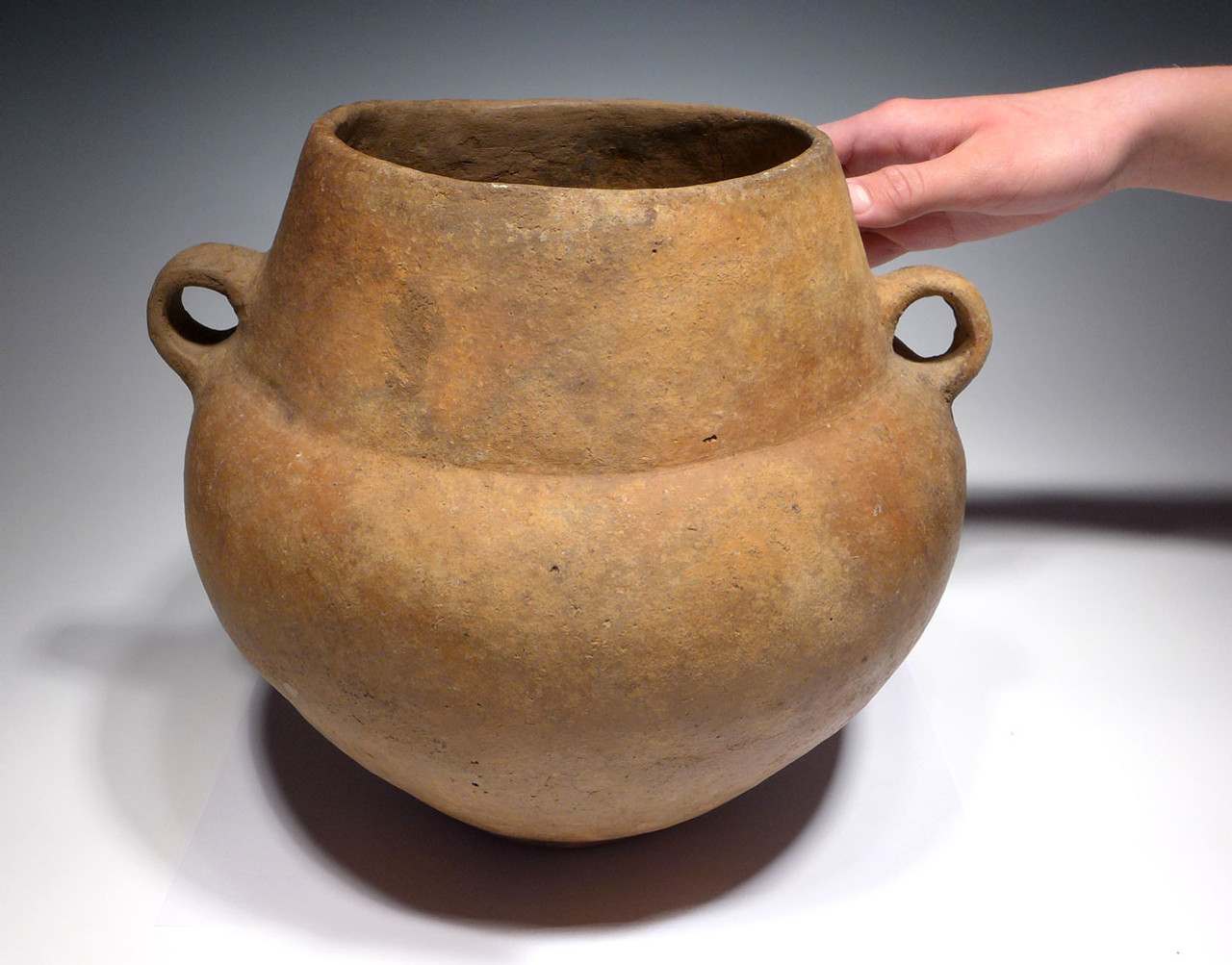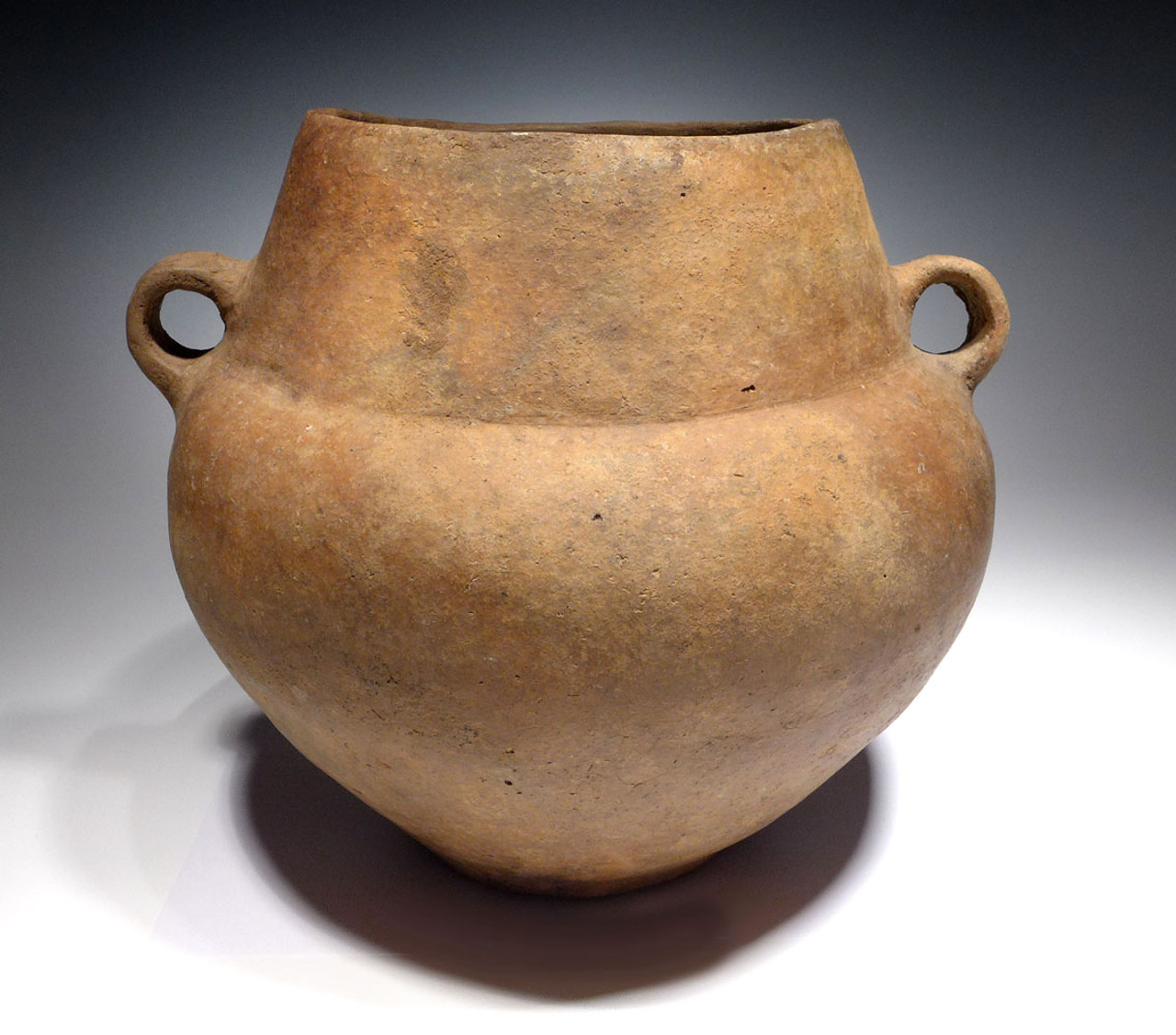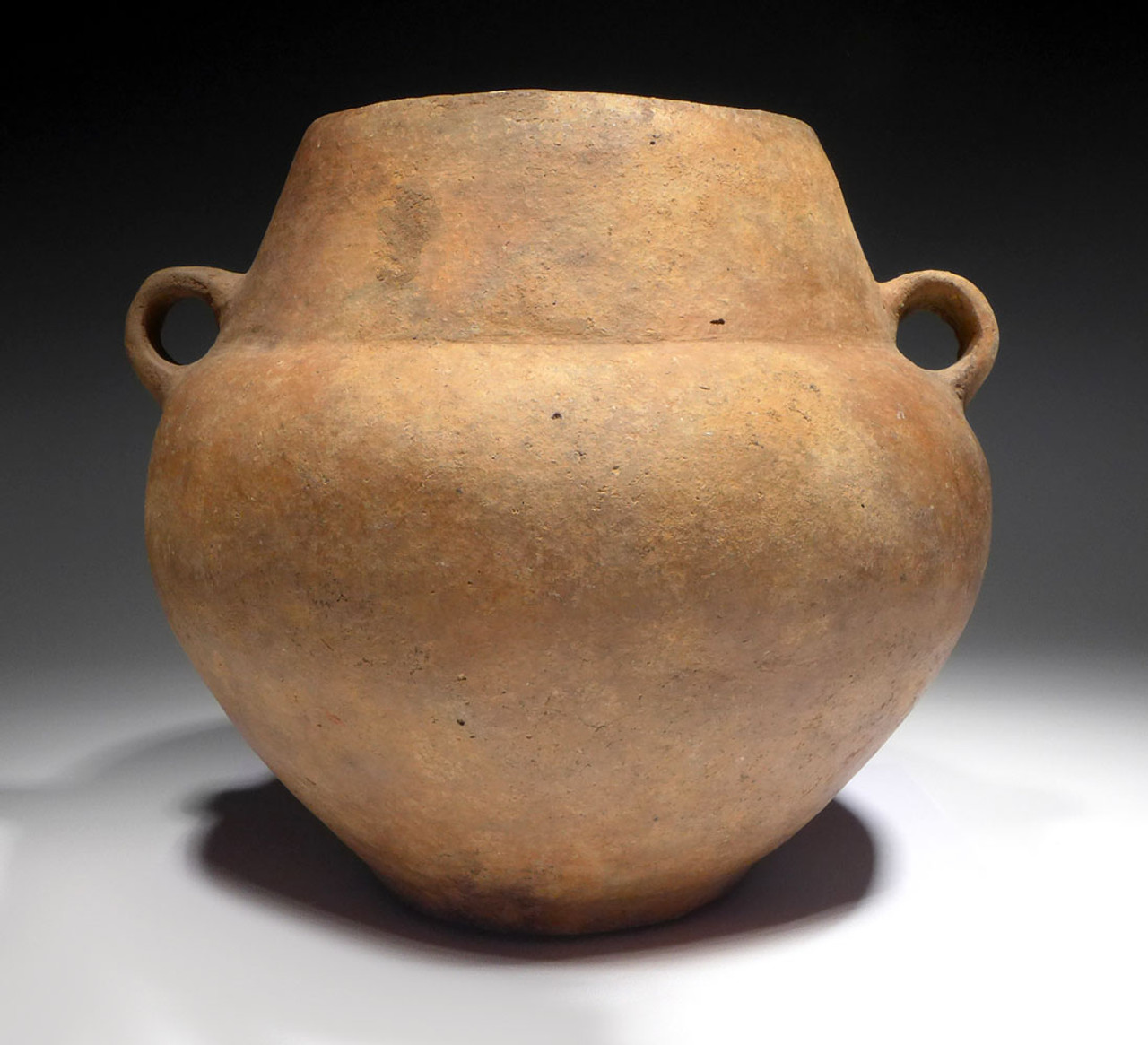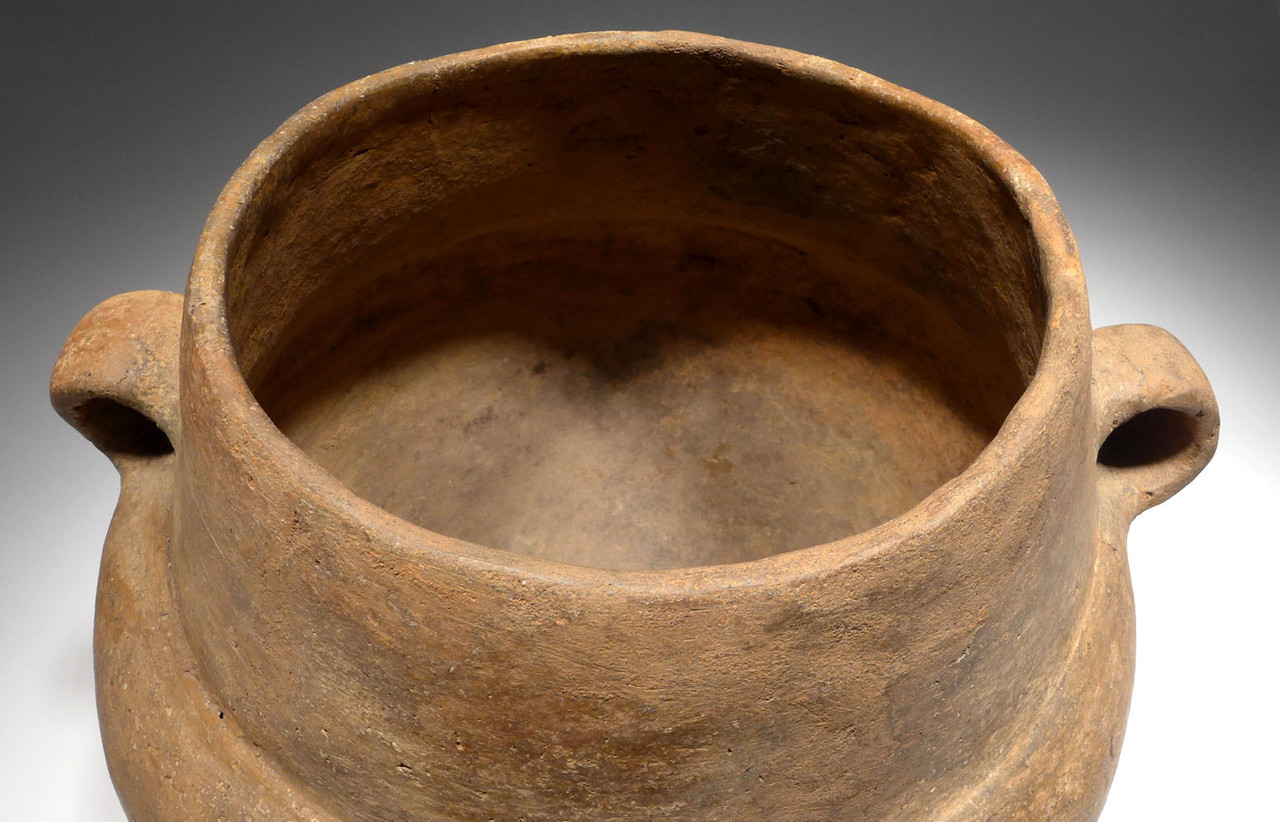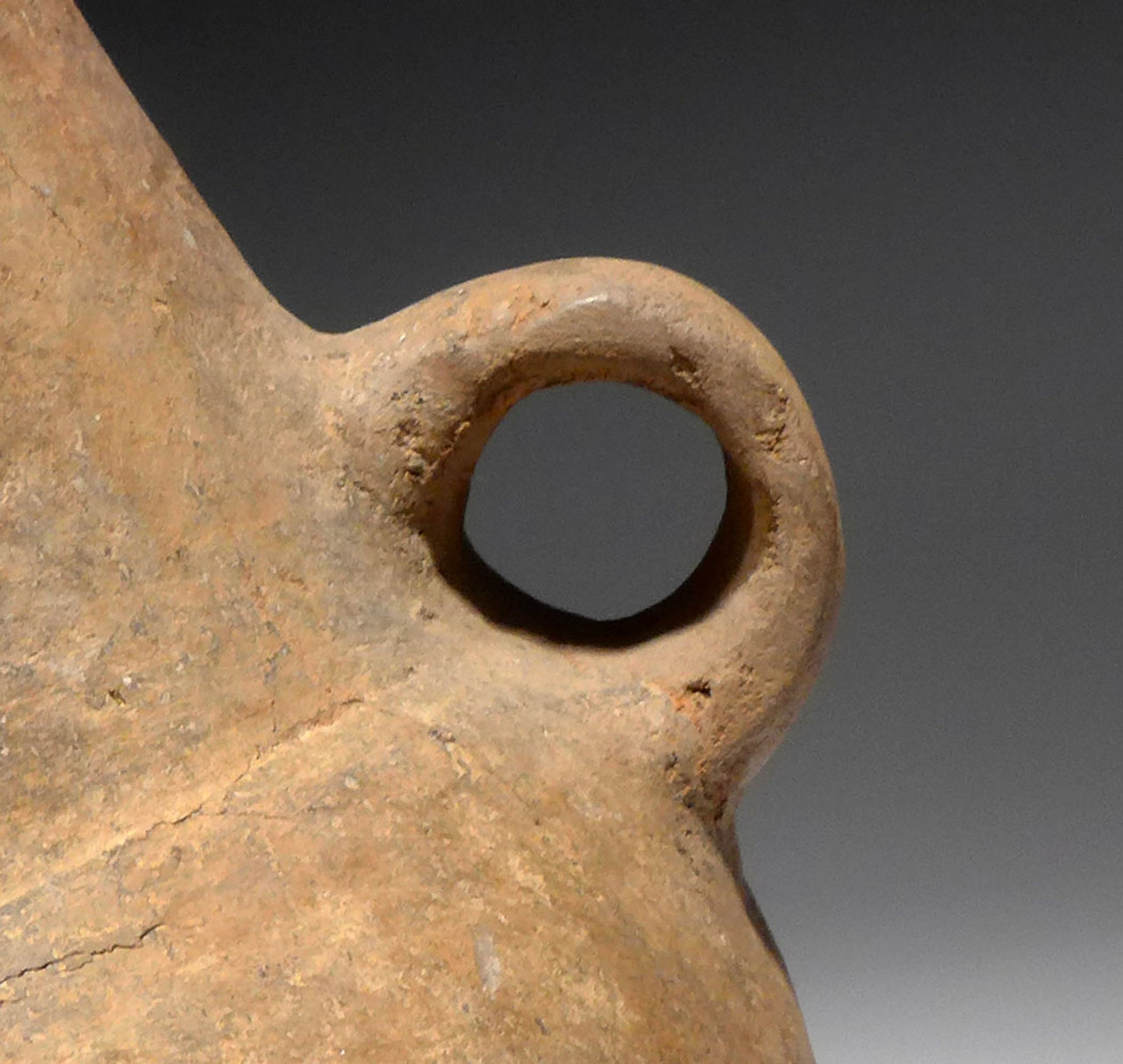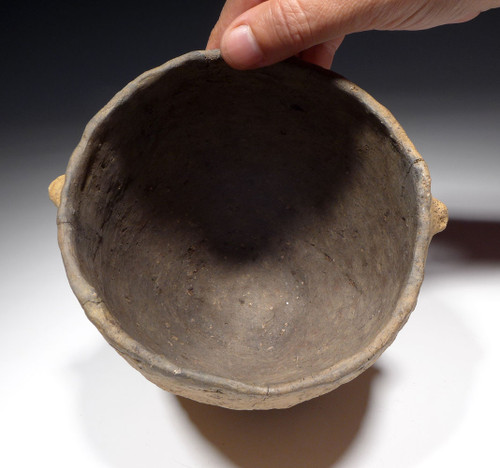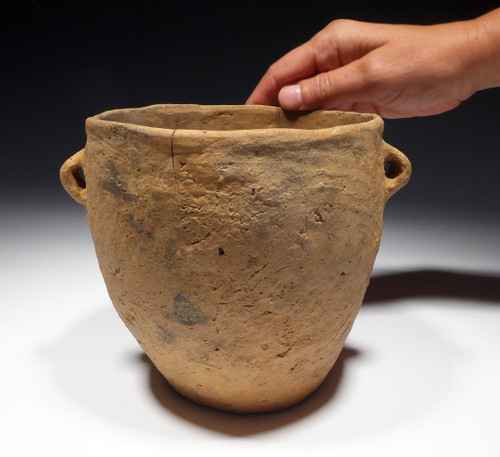Product Description
SEE MORE ANCIENT BRONZE AGE EUROPEAN ARTIFACTS
Advanced collectors will appreciate this unique opportunity to acquire some EXTREMELY RARE European Bronze Age ceramic pieces we will be offering from the former private German collection of H.S. Hesse. These are not just ordinary "everyday life" ancient ceramics but are European Urnfield burial ceramics of exquisite condition and preservation, from the European Lusatian Culture. Usually only found in museum collections in Europe, Urnfield pottery of fine condition is extremely rare! These are fascinating specimens, not of everyday ancient life, but of ancient death and the ritual, religion and burial practices of ancient European peoples of the Bronze Age, into the Early Iron Age. The majority of Urnfield pottery excavated and exhibited in museums is reassembled from mere fragments and requires EXTENSIVE restoration and fabrication. The condition of these ceramics from this very limited collection, are of much finer preservation than typically seen!
Once this limited number of pieces is gone, we will never again have the chance to offer any more. These ceramics are INFINITELY MORE RARE THAN ANY ANCIENT ROMAN OR GREEK POTTERY.
This impressive Lusatian Culture (also Lausitz Culture) primary burial urn is one of the LARGEST specimens we acquired from the collection and one of the few primary burial vessels we will offer. It is in impeccable preservation! Most Urnfield ceramics of the Bronze and Early Iron Ages are secondary pieces that would have accompanied a main vessel, such as cups, small dishes and dippers. For every single burial vessel, you may DOZENS of secondary pieces but ONLY ONE primary urn like this, so the rarity of this urn cannot be over-emphasized.
This superb, rare European ancient ceramic is a must to complete advanced collections of the period! Almost never seen on the open public market for sale.
Some burial vessels of the of the Lusatian Culture were larger than this example, and some were even smaller. Burials of this culture comprised ashes and sometimes, small objects placed inside a main vessel like this. A bowl or saucer was placed upside down over the top as a lid, and the whole set buried in a field. Since primary burial urns were put directly into the ground versus secondary vessels being placed inside which was more protected, these primary vessels seldom survive. Most are heavily damaged, requiring extensive repair and restoration.
HISTORY
The Urnfield Culture describes a tradition of Late Bronze Age central European societies dating back from 1300 B.C. to 700 B.C.. It gets its name from the practice of cremating the dead, placing the ashes in ceramic pots accompanied by other ceramic vessels, and then burying these pots in fields. These fields became ancient cemeteries and some included hundreds of burials while others were limited to only a few dozen per field. The practice of cremation is believed to have originated from the Balkans. Urnfield societies were based on economies of agriculture and animal husbandry.
The earliest Urnfield Culture societies cremated their dead and then dug graves whereby the ashes were simply scattered in the grave. Later, the practice changed to putting the ashes and bones in a large urn accompanied by other smaller ceramic vessels such as cups, bowls and small dishes. It is possible that food was also placed in this urn, all to be present with the deceased in the afterlife. Occasionally, jewelry is found in the urn which was worn by the deceased and survived the fire, but this is rare. Rich burials included grave gifts of spectacular objects in bronze such as elaborate spiral motif jewelry, fibulae, razors, hammered sheet armor, weapons such as swords, daggers, axes, spears and arrowheads, and vessels. In some cases, the objects like swords, are purposely destroyed as part of a ritual of the burial. The most prized bronze weapon was a sword. Other luxury grave gifts included amber or glass beads, and beautiful gold jewelry and appliqués reserved for the most wealthy and noble classes. Some burials have been found with entire wagons interred with the deceased!
One interesting member of the greater Urnfield Culture was the Lusatian Culture of eastern Europe. In Germany, the culture is known as 'Lausitz', named for the Lusatia area of eastern Germany where sites were first described in the 1800's by German pathologist and archaeologist, Rudolf Virchow (known today as the father of modern pathology). The Lusatian Culture peoples' interred cremated remains in pots to a time beyond central European societies, into the Early Iron Age around 500 B.C.. Lusatian Culture burials usually consist of a main urn that can range from modest sizes up to very large dimensions. In most cases, secondary ceramic vessels are included in the burial urn. The people of the Lusatian Culture were mainly farmers with domestication of animals and supplementing their diet with hunted game. Their settlements existed in both open and fortified plans.
The importance of the European Urnfield Culture is that it displays an ancient human concept of the existence of an afterlife and the cherishing of remains of deceased by loved ones. The placing of remains in a vessel demonstrates care of the deceased by the living. The inclusion of other vessels, accessories and gifts in the burial urn with the ashes, demonstrates the beliefs of these ancient peoples and helps us to delve into their mind, an invaluable insight since no written language existed in their societies at this time.
 US DOLLAR
US DOLLAR
 EURO
EURO
 AUSTRALIAN DOLLAR
AUSTRALIAN DOLLAR
 CANADIAN DOLLAR
CANADIAN DOLLAR
 POUND STERLING
POUND STERLING

